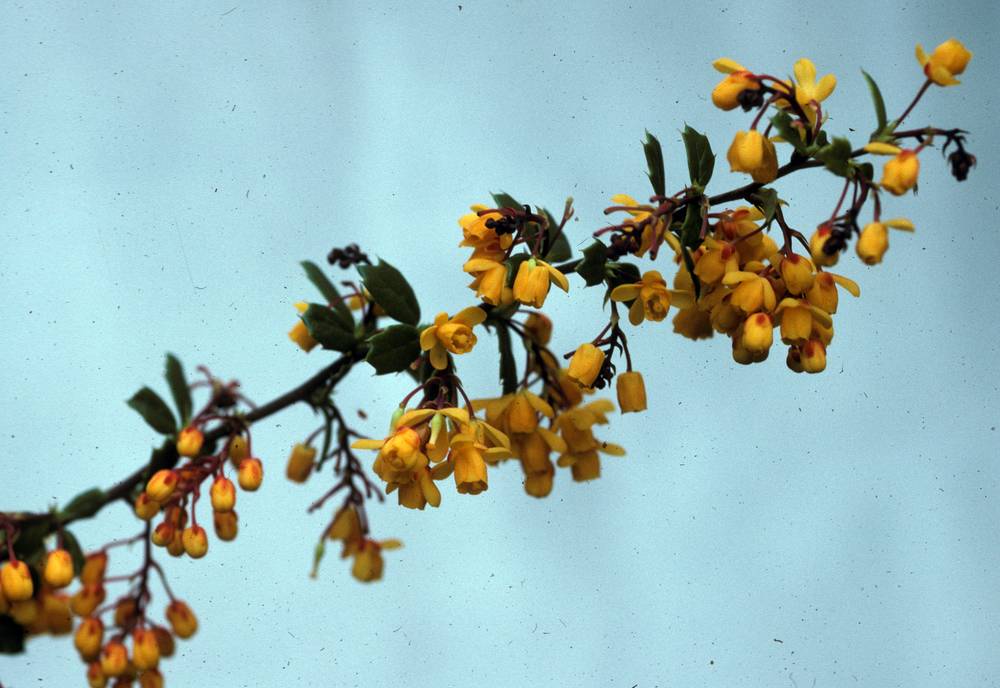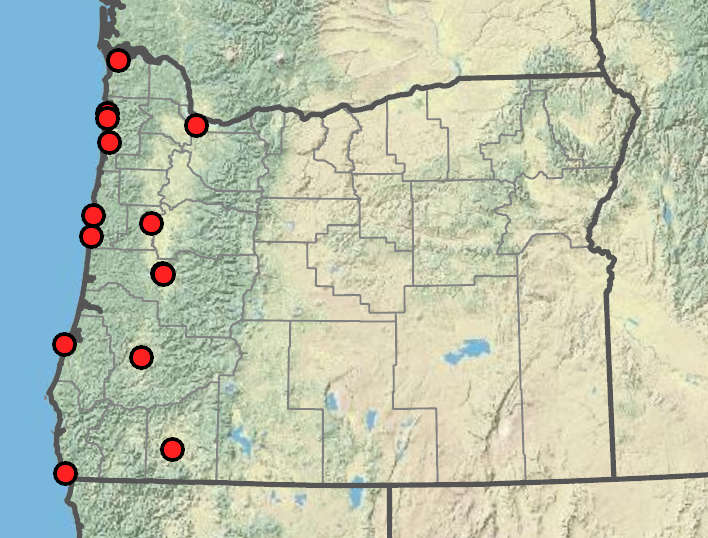Berberis darwinii
Darwin's barberry
dimorphic, with short axillary shoots;
twigs densely tomentose;
bud scales 2–4 mm, deciduous;
spines present, pedately 5–9-fid.
simple;
blades obovate, 1-veined from base, 1.7–3.0 × 0.9–1.2 cm; thick and rigid, bases acute or acuminate;
margins reflexed, undulate; each margin with 2–4 1–3 mm teeth or shallow lobes, tipped with 1.2–1.6 × 0.2–0.3 mm spines; glossy and smooth abaxially; glossy and green adaxially;
tips obtuse or rounded in outline;
petioles 0.1–0.3 cm.
10–20-flowered, 3–4 cm;
bracts acuminate.
filaments without lateral teeth.
globose, 6–7 mm, dark purple.
Berberis darwinii
Shrublands, open coastal woodlands. Flowering Mar–Jun. 0–100 m. Est. CA, WA; South America. Exotic.
Berberis darwinii is a popular hedge plant in coastal gardens, and it has escaped in several places along the U. S. Pacific coast. Once established, it can spread by underground runners to form thickets.
Alan Whittemore
- Local floras:
BC,
CA,
OR,
WA
- Local Web sites:
CalFlora,
CalPhotos,
Flora NW,
PNW Herbaria
WildflowerSearch
iNaturalist (observations)
USDA Plants Database
- LBJ Wildflower Center
- SEINet
- Plants of the World Online
- Encyclopedia of Life
- Wikipedia
- Google Image Search



